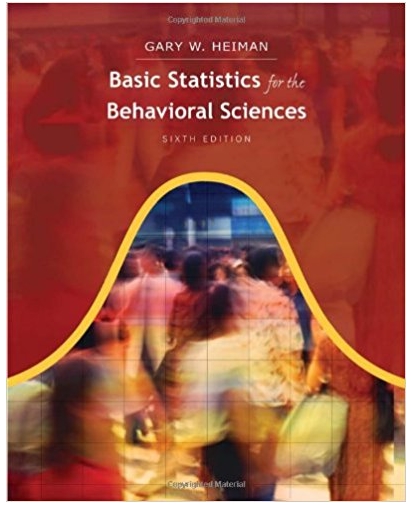Question
Identify how agency, objectification, or sexualization comes into play in one statement or paragraph from this article. Specifically how does the passage illustrate this concept?
Identify how agency, objectification, or sexualization comes into play in one statement or paragraph from this article. Specifically how does the passage illustrate this concept?
Fit Chick Unbelievable Knockers Earlier in 2003 this T-shirt (Fit Chick Unbelievable Knockers) became one of the best-selling items ever for the British high street fashion store French Connection. Like French Connection's generic T-shirt 'fcuk me' and the World Cup inspired bestseller, 'fcuk football' it was a huge success. It could be seen everywhere, emblazoned across the chests of girls and young women, and competing on the street, in the club and on the tube with other similar T-shirts declaring their wearer a 'babe 'or 'porn star' or 'up for it', or giving instructions to 'touch me' or 'squeeze here'. Even my own university, the London School of Economics, got in on the act, producing a T-shirt designed I guess to connote a combination of beauty and brains, sexiness and sophistication: 'LSE BABE'. What struck me forcibly about the 'fit chick unbelievable knockers' T-shirt was not just what a sexualized self- presentation it offers, but also how alienated and objectified its terms are. A generation ago many women were struggling and fighting not to be portrayed in this objectified manner, not to be reduced to the size of their breasts, or to be consumed only as sexual objects, and yet today young women are actually paying good money (and these T-shirts are not cheap, they cost 20/$30 a time) to present themselves in this way. What is going on here? I want to argue that these T-shirts represent just one highly visible example of a shift that has been going on across popular culture for several years the knowing and deliberate resexualisation and re-commodification of women's bodies, and men's too in the wake of feminist critiques that neutralized at least the more overt examples of objectification of women's bodies. As I travel to work in London by bus and tube every day I am greeted by a 'breast count' that far exceeds that which exercised feminists in the 1970s, and, while they daubed angry graffiti or protest stickers on the offending adverts, today such representations are almost entirely normalized (or, indeed, as I have discussed elsewhere, potential critiques are 'ironically incorporated' into the advertisements themselves). From Sex Object to Sexual Subject What makes these hyper-sexualised representations of women's bodies different from earlier representations in the 1960s and 1970s is that they are clearly responses to feminism, and, in that sense, I would suggest, are far less 'innocent' than earlier sexualised depictions. Furthermore, this pervasive re-inscription of women as sexual objects is happening at a moment when we are being told that women can 'have it all' and are doing better than ever before in school, University and the workplace. Publications by think tanks, articles by journalists, and research by marketing agencies cohere around the notion that there has been a 'genderquake' in contemporary society, that tomorrow's values are 'feminine' and that 'women are winning'. As Angela McRobbie has argued, young women have become both metaphors and standard bearers for the 'new meritocracy' in Tony Blair's Britain, charged with delivering social change ('Good Girls, Bad Girls?', in British Cultural Studies). On the one hand, then, we are confronted by a popular culture increasingly saturated by representations of women's bodies as objects, and on the other, a mantra-like repetition and celebration of 'women's success' and 'Girl Power'. One way of reading the re-sexualisation of women's bodies in this strange, contradictory context is as part of a backlash against feminism. It may serve as both an attack on women putting women back in their place and, simultaneously as a reassurance for men threatened by girls' increasingly good performance in public examinations and women's success in the workplace. In an excellent, insightful analysis, Imelda Whelehan suggests that we have entered an era of 'retrosexism', premised on real fears about the collapse of male hegemony. She explores the nostalgic quality of much contemporary television, which harks back to a time and place peopled by real women and humorous 'cheeky chappies' (p. 11). She argues that representations of women, 'from the banal to the downright offensive' are being 'defensively reinvented against cultural changes in women's lives' (p. 11).Gill, "From Sexual Objectification to Sexual Subjectification," 2 This argument is a compelling one, and has much to recommend it. But it does not, in my opinion, tell the whole story. In particular, the focus on 'harking back' may miss what is new about contemporary sexualised depictions of women. I want to suggest that what we are seeing is not just a harking back to a safe, bygone or mythical age when 'men were men and women were women', but rather the construction of a new femininity (or, better, new femininities) organized around sexual confidence and autonomy. Indeed, what is novel and striking about contemporary sexualised representations of women in popular culture is that they do not (as in the past) depict women as passive objects but as knowing, active and desiring sexual subjects. We are witnessing, I want to argue, a shift from sexual objectification to sexual subjectification in constructions of femininity in the media and popular culture
Step by Step Solution
There are 3 Steps involved in it
Step: 1

Get Instant Access to Expert-Tailored Solutions
See step-by-step solutions with expert insights and AI powered tools for academic success
Step: 2

Step: 3

Ace Your Homework with AI
Get the answers you need in no time with our AI-driven, step-by-step assistance
Get Started


